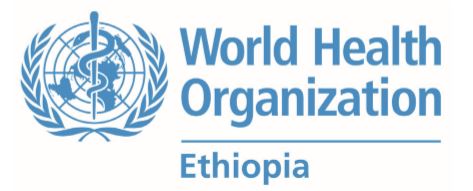The Yellow Fever sub-national risk analysis findings dissemination workshop, and consultative and advocacy meeting was held in Addis Ababa Ethiopia on 4th October 2023. The workshop was organized by World Health Organization (WHO) Ethiopia in collaboration with Ministry of Health (MoH) and global and in-country partners.
“Today’s meeting will hopefully result in a concrete consensus for the advancement and for the scaling up of the national yellow fever control strategy in Ethiopia. WHO is committed to continue its support for the implementation of the Yellow Fever programme in Ethiopia.” said Dr Sarai Malumo, RMNCAH Cluster Lead speaking on behalf of Dr. Nonhlanhla Dlamini, WHO Representative to Ethiopia a.i.
The Yellow Fever (YF) risk analysis was led by the National Risk Analysis Working Group (RAWG) with members from MOH, Ethiopian Public Health Institute (EPHI), WHO and US-CDC. The findings from the risk analysis were presented during the workshop conveying the relative risks of regions in Ethiopia, and the updated Ending Yellow Fever Elimination (EYE) Strategy and the global, regional and national yellow fever epidemiological situation.
The rational for the risk analysis was prioritization of regions for a risk-based and phased Preventive Mass Vaccination Campaign (PMVC) and to support country applications to Gavi for YF vaccine allocation through transparent&equitable process.
The current subnational YF risk assessment has shown all regions have risks of Yellow Fever but the relative risk of regions varies with some degrees of risk scores. The recent outbreaks in Ethiopia reported in 2013, 2018, and 2020 and the most recent one occurred in the Gurage Zone of Southern Nations, and Nationalities and Peoples’ Region (SNNPR), an area that had not been affected earlier.
WHO estimates from the early 1990s, annually 2,200,000 yellow fever cases, with 30,000 deaths occurring globally, and above 90% occurring in Africa. Ethiopia is one of the 27 high-risk countries in Africa.
The gathering of all stakeholders in the YF Sub-national risk analysis dissemination workshop was used as an opportunity to discuss and resolve potential concerns with the yellow fever vaccine introduction and to decide on the next actions to better fight yellow fever in Ethiopia.
The large Ethiopian population has very low yellow fever immunity and yet the yellow fever virus is endemic in the country. The risk of a yellow fever outbreak is real but can be minimized. With support from EYE partners, Ethiopia is well positioned to contribute to the success of the EYE Strategy in its endeavor to protect its population from a high-impact vaccine-preventable disease.
The Ending Yellow fever Elimination (EYE) Strategy was developed in 2017 by a coalition of partners (Gavi, UNICEF and WHO) following the major outbreak of yellow fever in Angola in 2016. It is a comprehensive and long-term strategy built on lessons learned from the Angola outbreak that spread worldwide resulting in tremendous economic, social and political impacts. The strategy aims at ending yellow fever epidemics by 2026 and consists of three strategic objectives: protect at-risk populations; prevent international spread; and contain outbreaks rapidly. The yellow fever virus itself cannot be eradicated, but we can stop the epidemics using Yellow Fever vaccine.
All Member States of the African region endorsed the EYE Strategy in 2017. The Strategy is being implemented in 40 countries and with more than 50 partners involved.
The EYE strategy offers a continuum from prevention to outbreak, which have helped to prevent and respond to yellow fever emergencies in the last six years.
Without the work of EYE partners, yellow fever has the potential to trigger large epidemics with international spread. But through the efforts led by countries, this can be avoided.
Distributed by APO Group on behalf of World Health Organization (WHO) – Ethiopia.
